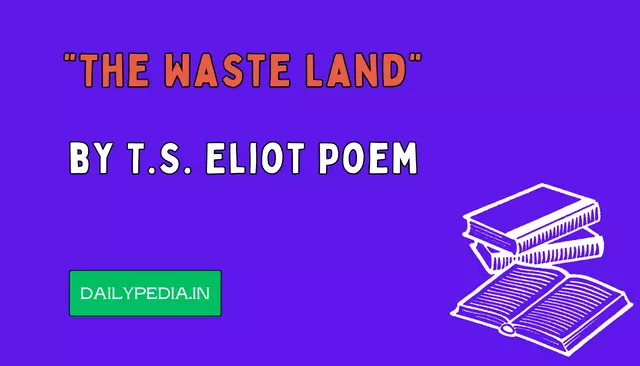The Waste Land” is a renowned modernist poem by T.S. Eliot, first published in 1922. It is considered one of the most influential works of 20th-century literature. The poem is known for its intricate structure and explores themes of spiritual desolation, societal decay, and the search for meaning in a world marked by disillusionment. Through vivid imagery and diverse literary references, Eliot paints a bleak portrait of the post-World War I era while also offering glimpses of hope and redemption. “The Waste Land” remains a seminal work in the canon of English poetry, celebrated for its complexity and enduring relevance.

The Waste Land Poem in English
April is the cruellest month, breeding
Lilacs out of the dead land, mixing
Memory and desire, stirring
Dull roots with spring rain.
Winter kept us warm, covering
Earth in forgetful snow, feeding
A little life with dried tubers.
Summer surprised us, coming over the Starnbergersee
With a shower of rain; we stopped in the colonnade,
And went on in sunlight, into the Hofgarten,
And drank coffee, and talked for an hour.
“Summer surprised us, coming over the Starnbergersee
With a shower of rain; we stopped in the colonnade,
And went on in sunlight, into the Hofgarten,
And drank coffee, and talked for an hour.”
This is just a small part of the poem. “The Waste Land“ is a complex and highly regarded work of modernist literature that explores themes of disillusionment, fragmentation, and cultural decay in the aftermath of World War I.
Share With Your Friends